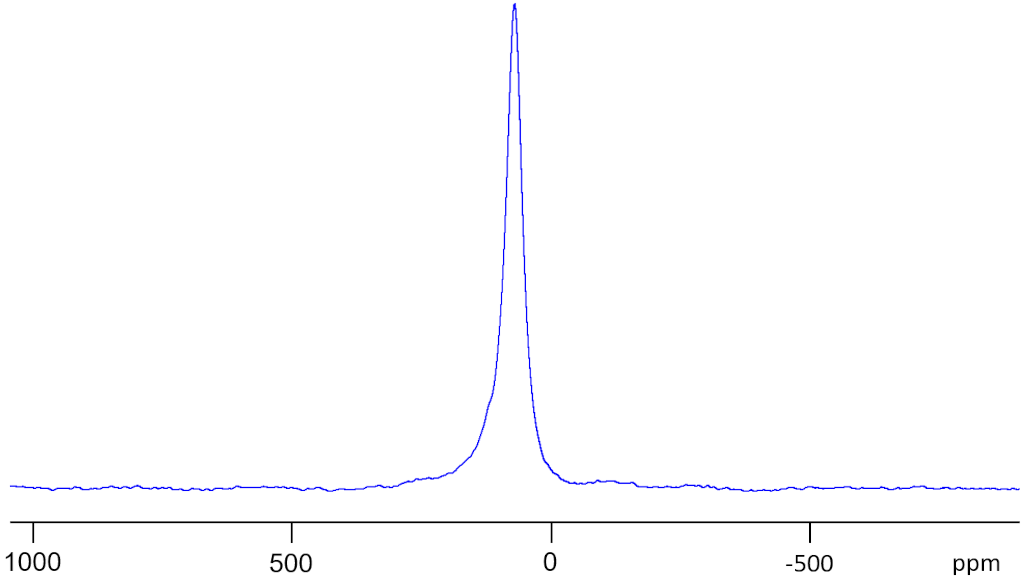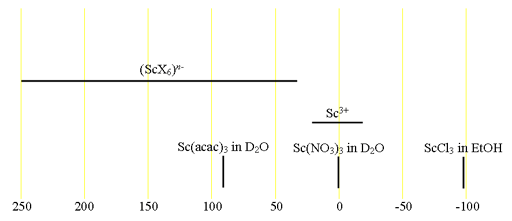(45Sc) Scandium NMR
Use our NMR service that provides 45Sc NMR and many other NMR techniques.
45Scandium NMR
45Scandium (45Sc) is a high sensitivity nucleus but with a 100% natural abundance that yields broad lines even in symmetric environments over a wide chemical shift range. 45Sc is a spin 7/2 nucleus and is therefore quadrupolar. As a result, the signal width increases with asymmetry of the environment. Fig. 1 shows the 45Sc NMR spectrum of scandium triflate in methanol-d4. The natural linewidth in this spectrum at 500 MHz is approximately 3 kHz because it is quadrupolar. 45Sc NMR is rarely used because scandium is rare and has a limited chemistry and when it is used it is to study the chemical environment of the scandium. Each type of Scandium compound has its characteristic chemical shift (fig. 2).
Fig. 1. 45Sc NMR spectrum of Sc(CF3O3S)3 in CD3OD

Fig. 2. Chemical shift ranges for scandium NMR (X = halide)

Please ask us for 45Sc-NMR service.
Properties of 45Sc
| Property | Value |
|---|---|
| Spin | 7/2 |
| Natural abundance | 100% |
| Chemical shift range | 350 ppm, from -100 to 250 |
| Frequency ratio (Ξ) | 24.291747% |
| Reference compound | 0.06 M Sc(NO3)3 in D2O |
| Linewidth of reference | 270 Hz |
| T1 of reference | 5 × 10-3 s |
| Receptivity rel. to 1H at natural abundance | 0.302 |
| Receptivity rel. to 1H when enriched | 0.302 |
| Receptivity rel. to 13C at natural abundance | 1780 |
| Receptivity rel. to 13C when enriched | 1780 |
| Linewidth parameter | 66 fm4 |
Safety note
Some of the materials mentioned here are very dangerous. Ask a qualified chemist for advice before handling them. Qualified chemists should check the relevant safety literature before handling or giving advice about unfamiliar substances. NMR solvents are toxic and most are flammable. Specifically, the toxicity of scandium salts are of unknown on account of their scandium under normal circumstances, however, their anions may be toxic.